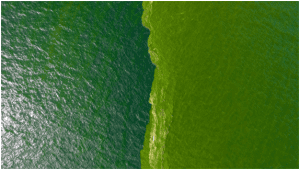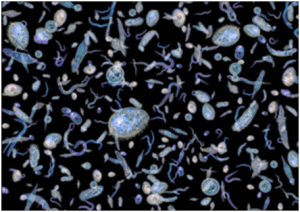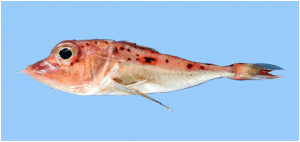1. ARCHAEOLOGICAL SURVEY OF INDIA (ASI)
TAG: GS 1: ART AND CULTURE
THE CONTEXT: A Parliamentary panel calls for revising rules of construction around protected ASI monuments.
EXPLANATION:
- According to the Parliamentary panel, the regulations imposed by the ASI around the monuments are creating problems for the local community.
- Construction and other activities around 100 meters of the monuments are prohibited while those around 300 metres are restricted.
- The community finds it difficult to do repair work of their residential spaces due to the same.
- Need for revising the rules:
- In some cases, the entire village is within a radius of 300 meters, which makes it difficult for the entire village to carry out repair work of their residential houses.
- The same set of rules apply to both significant and insignificant monuments. For example, the rules above apply identically to the iconic Ajanta and Ellora monuments and Kos Minars, unknown cemeteries and tombs etc.
- It also noted that a quarter of the Centrally Protected Monuments are minor monuments with no national significance. For example, 75 graves of colonial-era soldiers.
Archaeological Survey of India:
- The Archaeological Survey of India (ASI) was established in 1861 , under the Ministry of Culture, is the premier organization for the archaeological research and protection of the cultural heritage of the nation.Its headquarters is in New Delhi.
- Alexander Cunningham was the first director general of ASI. He is known as the father of Indian Archaeology.
- In 1937, K.N. Dikshit became the Director General of the ASI and conducted important excavations in Ahichchhatra. After Independence, N.P. Chakravarti succeeded Sir Mortimer Wheeler as the head of the ASI in 1948.
Powers and functions of ASI:
- Maintenance of ancient monuments and archaeological sites and remains of national importance is the prime concern of the ASI. Besides, it regulates all archaeological activities in the country as per the provisions of the Ancient Monuments and Archaeological Sites and Remains Act, 1958. It also regulates the Antiquities and Art Treasure Act, 1972.
- The prohibited and restricted area provision was introduced in 2010 through an amendment to the Ancient Monuments and Archaeological Sites and Remains (AMASR) Act, 1958.
- It prohibits and regulates all activities like mining and construction around 100 metres and 300 metres.
2. INDIA-CHINA RELATION
TAG: GS 2: INTERNATIONAL RELATIONS
THE CONTEXT: Sports Minister cancelled his trip after China barred 3 Indian athletes from the Asian Games.
EXPLANATION:
- The union sports minister has cancelled his visit to China for the upcoming Asian Games amid an escalating row over entry to athletes.
- Reasons for cancelling the visit:
- China denied accreditation and entry to Indian sportspersons in the Asian Games.
- China is discriminating against Indian citizens on the basis of domicile or ethnicity.
- China has issued stapled visas to residents of India’s northeastern state of Arunachal Pradesh. Stapled visas are meant to indicate that China doesn’t recognise India’s sovereignty over Arunachal Pradesh.
- China claims Arunachal Pradesh as “south Tibet” and announced a list of its own names for locations and geographic features in the strategic border state.
- Background:
- China and India have been uneasy neighbours for decades after a war over their disputed Himalayan frontier in 1962. Relations nosedived in 2020 after a border clash in which 20 Indian and four Chinese soldiers were killed.
- In December 2022 troops of India and China clashed in Galwan valley.
- Arunachal Pradesh was depicted within China’s borders in a “standard map” released by China in August 2023.
- However, India always denied the claim of China over Arunachal Pradesh and said that Arunachal Pradesh is an integral and inalienable part of India.
- About Asian Games:
- The Asian Games is a multi-disciplinary sports event held once every four years. Athletes from all Asian countries are welcomed to participate in this event. The Asian Games is recognised by the International Olympic Committee and is the second largest multi-sport event after the Olympics.
- Guru Dutt Sondhi, a member of the Indian International Olympic Committee, proposed the idea of Asian Games as a sporting event, where all Asian nations can be represented.
- Asian Games were regulated by the Asian Games Federation from 1951 to 1978. Since 1982, Olympic Council of Asia now regulates the Asian Games.
- The symbol for the Asian Games is the rising sun with interlocking rings. Nine nations have hosted the Asian Games so far and 46 nations have participated in the games. Israel has not taken part in the Asian Games since 1974.
- India and Asian Games:
- India is a founder member of Asian Games and also the host of the first Asian Games.
- The first-ever Asian Games were held in New Delhi in 1951.
- India is one of the seven countries to have participated in all the editions of the Asian Games.
- India along with Japan is the only country to have won at-least one gold medal in every event of Asian Games.
3. UNCLOS
TAG: GS 2: INTERNATIONAL RELATIONS
THE CONTEXT: Quad members said that all maritime claims should be addressed under UNCLOS.
EXPLANATION:
- The foreign ministers of the Quad group reiterated that they are committed to combating terrorism in all its forms and manifestations and also called for adhering to UNCLOS in addressing maritime claims in South and East China seas.
- The Quad ministers reaffirmed that “international law, respect for sovereignty and territorial integrity, and the maintenance of peace and security in the maritime domain underpin the development and prosperity of the Indo-Pacific”.
About UNCLOS:
- The United Nations Convention on the Law of the Sea was adopted in 1982.
- It lays down a comprehensive regime of law and order in the world’s oceans and seas establishing rules governing all uses of the oceans and their resources.
- It is also referred to as the Law of the Sea. It divides marine areas into five main zones: the High Seas, Exclusive Economic Zone (EEZ), Contiguous Zone, Territorial Sea, and Internal Waters.
- It is the only international agreement that lays out a foundation for sovereign authority in maritime areas. It gives certain maritime zones various legal statuses.
- It serves as the framework for offshore governance among coastal nations and seafarers.
- Additionally to zoning the offshore areas of coastal states, it offers detailed instructions on each state’s rights and obligations inside the five concentric zones.
- India has been a party to UNCLOS since 1995 and contributed positively to the discussions that led to its adoption in 1982.
- The United Nations General Assembly decided, in 2015, to develop an international legally binding instrument under UNCLOS on the conservation and sustainable use of marine biological diversity of areas beyond national jurisdiction, but at present it is not formally adopted by the members.
About QUAD:
- QUAD is Known as the ‘Quadrilateral Security Dialogue’ (QSD).
- It is an informal strategic forum comprising four nations, namely — United States of America (USA), India, Australia and Japan.
- One of the primary objectives of the Quad is to work for a free, open, prosperous and inclusive Indo-Pacific region.
- It is considered an alliance of maritime democracies, and the forum is maintained by meetings, semi-regular summits, information exchanges and military drills of all the member countries.
- Formation of QUAD:
- Since it was established in 2007, the representatives of the four-member nations have met periodically. Japanese Prime Minister Shinzo Abe was the first to pitch the idea for the formation of Quad in 2007.
- However, It was restarted in 2017 when the first official talks under the Quad took place in the Philippines.
Source:(https://thewire.in/world/quad-says-that-all-maritime-claims-should-be-addressed-under-unclos)
4. PLANKTON BLOOM
TAG: GS 3: ENVIRONMENT AND ECOLOGY
THE CONTEXT: The livelihood of local fishermen who farm mussels in the waters is threatened by an unusually dense plankton bloom that is creating an aquatic “dead zone” at the Chonburi’s coastline, Thailand.
EXPLANATION:
- Chonburi’s coasts are famous for their mussel farms, and more than 80% of the almost 300 plots in the area have been affected.
- Some areas in the Gulf of Thailand have more than 10 times the normal amount of plankton, turning the water a bright green and killing off marine life.
- While the cause of the intense plankton bloom remains unclear, scientists believe pollution and the intense heat caused by climate change are the reason.
- A plankton bloom caused thousands of dead fish to wash up along a stretch of beach in Thailand’s southern Chumphon province in the mid of 2023.

WHAT ARE PLANKTON BLOOMS?
- A phytoplankton bloom is the development of a level of phytoplankton biomass that is uncharacteristically high for a given water body.
- Often, but not always, blooms are formed by a single species.
- Phytoplankton are microscopic, unicellular, filamentous, or colonial, photosynthetic microalgae or cyanobacteria that live in water.

Phytoplankton Growth Rate:
- Like terrestrial plants, phytoplankton require sunlight and inorganic nutrients to produce new biomass.
- Limited supplies of light or nutrients can slow or stop cell division, preventing bloom formation.
- Nitrogen and phosphorus are the nutrients most likely to be in short supply relative to demand, and by Liebig’s law of the minimum, are the primary growth-limiting nutrients.
- Nitrogen supplies tend to be limited in marine waters, and phosphorus supplies tend to be limited in freshwaters. However, many exceptions to these trends exist.
How does phytoplankton create dead zone?
- “Dead zone” is a more common term for hypoxia, which refers to a reduced level of oxygen in the water.
- Less oxygen dissolved in the water cause the marine life to either dies, or, if they are mobile such as fish, leave the area.
- Habitats that would normally be teeming with life become, essentially, biological deserts.
- Hypoxic zones can occur naturally, but scientists are concerned about the areas created or enhanced by human activity.
- Blooms of phytoplankton or algae can cause major environmental problems.
- Harmful algal blooms (HABs) occur when phytoplankton (algae and cyanobacteria) rapidly increase or accumulate, producing harmful conditions that negatively impact people, freshwater and marine ecosystems, and economies.
- Certain environmental conditions including high nutrient concentrations from stormwater runoff or wastewater and insufficient mixing of the water column can trigger HABs.
Mitigation Strategies:
- Reduce External Nutrient Loading.
- Water Column Mixing.
- Legacy Nutrient Removal.
- Biological and Chemical Controls
Chonburi coastline of Thailand:
- Chonburi is a coastal province in eastern Thailand, with a coastline of over 170 kilometers.
- The area boasts abundant natural resources, which are highlighted by delightful Beaches, Local traditions, regional delicacies, and fresh Seafood.
- It is home to a variety of beaches, including the popular tourist destinations of Pattaya, Jomtien, and Bang Saen.
- It is also important for its fishing industry, which supports thousands of local people.
- The coastline is home to a variety of mangroves, which provide important habitat for fish and other marine life.
- Chonburi’s coastline is also home to a number of cultural and historical attractions, such as the Sanctuary of Truth and the Nong Nooch Tropical Botanical Garden.
5. PTERYGOTRIGLA INTERMEDICA
TAG: GS 3: ENVIRONMENT AND ECOLOGY
THE CONTEXT: The scientists of the Zoological Survey of India (ZSI) have discovered a new species of a vibrant orange coloured deep water marine fish Pterygotrigla intermedica from Digha Mohana in West Bengal.
EXPLANATION:
- The detailed characteristics of this new fish species were published in Thalassas, an international marine science journal on September 20, 2023.
- The species was caught by a local fisher on October 20, 2018, along with other fishes. The researchers collected a total of 24 specimens from the Digha Mohana fishing harbour during their study of by-catch components along the northern part of the east coast of India.
- The discovery of Pterygotrigla intermedica is significant because it adds to our knowledge of the diversity of gurnard fishes in India and the world.

PTERYGOTRIGLA INTERMEDICA:
- It is commonly known as gurnards or sea-robins, belongs to the family Triglidae.
- After thorough examinations, the specimens of this fish were found to be very distinct from other gurnad species in various aspects such as snout length, shape of the internuchal space and size of the cleithral spine.
- It is named Pterygotrigla intermedica because of its similar characters to species like Pterygotrigla hemisticta.
- It is the fourth species of Pterygotrigla genus reported in India so far and there are a total 178 species of the Triglidae family worldwide.
What are the distinctive features of Pterygotrigla intermedica?
- Pterygotrigla intermedica is distinguished from other gurnard species by a number of features, including:
- A long opercular spine and a very short cleithral spine
- A lateral line
- 12–13 gill rakers on the lower limb of the first gill arch
- A large black blotch between the 4th and 6th spines of the first dorsal fin
- A distinct pectoral fin with black membranes on the inner surface, a white posterior margin, and three small white spots basally in the fin, with each ray being creamy white.
ZOOLOGICAL SURVEY OF INDIA (ZSI):
- The ZSI is the apex organization in India for zoological research and studies.
- It was established on July 1, 1916, as a Zoological Section of the Indian Museum at Calcutta.
- The ZSI has its headquarters in Kolkata and 16 regional centers spread across the country.
- It also maintains a National Zoological Collection, which is one of the largest and most comprehensive in Asia.
- The ZSI publishes a variety of scientific publications, including journals, books, and monographs and provides training and capacity building in zoological research and management.
- The ZSI’s main objectives are to:
- Conduct surveys and explorations to study the faunal diversity of India.
- Identify, classify, and document the faunal species of India.
- Conduct research on the ecology, behavior, and conservation of Indian fauna.
- Maintain and develop national zoological collections.
- Promote public awareness and education about Indian fauna.

